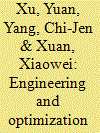|
|
|
Sort Order |
|
|
|
Items / Page
|
|
|
|
|
|
|
| Srl | Item |
| 1 |
ID:
116991


|
|
|
|
|
| Publication |
2012.
|
| Summary/Abstract |
Since China decontrolled coal prices, its coal price has risen steadily and been unusually volatile. In 2011 in particular, high coal prices and capped electricity prices in China discouraged coal-fired power generation, triggering widespread power shortages. We suggest that these coal-price disturbances could be symptomatic of a major change in pricing dynamics of global fossil-fuel markets, with increasing correspondence between coal and oil prices globally. Historically, global coal prices have been more stable and lower than oil and natural gas prices on a per-heat basis. In recent years, however, coal prices have been increasingly volatile worldwide and have tracked other fossil fuel prices more closely. Meanwhile, the recent development of unconventional gas has substantially decoupled US natural gas and oil prices. Technically, low US natural gas prices, with potential fuel switching, could drive US domestic coal prices lower. However, this effect is unlikely to counteract the overall trend in increasing coal consumption globally. China's market size and unique, partially-controlled energy system make its reform agenda a key force in the global economy. Policymakers in the US, E.U. and elsewhere should monitor China's economic reform agenda to anticipate and respond to changes accompanying China's increasing importance in the global energy economy.
|
|
|
|
|
|
|
|
|
|
|
|
|
|
|
|
| 2 |
ID:
124304


|
|
|
|
|
| Publication |
2013.
|
| Summary/Abstract |
China has made improving the thermal efficiencies of its coal-fired power plants a national priority. Official data show that the average thermal efficiency was enhanced from 31.3% in 2000 to 33.2% in 2005 and 36.9% in 2010. This paper aims to assess the validity of China's claimed improvement, examine major responsible factors, and identify future improvement opportunities. Recognizable factors can account for about 80% of the reported progress in the 10th Five-Year Plan (2001-2005) and about 85% in the 11th (2006-2010) to largely verify the reported progress. Engineering approaches-especially replacing inefficient power units with more efficient ones-are the largest contributing factors, while optimization approaches-particularly electricity dispatch-remains inefficient in China. In 2010, the explainable efficiency improvement might have avoided around 500 million tons of CO2 emissions. In comparison, although the United States was fairly static with most of its coal-fired power plants seriously outdated, it has more efficient electricity dispatch. In China's ongoing 12th Five-Year Plan (2011-2015), better dispatch patterns could be more important as opportunities for improvement through engineering approaches have been largely exhausted.
|
|
|
|
|
|
|
|
|
|
|
|
|
|
|
|
|
|
|
|
|